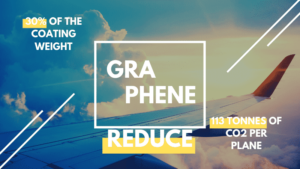Good news for graphene in aeronautics and space travels!
“Terribly enthusiastic!” That was how Richard Branson, media darling and director of Virgin Galactic, reacted to the potential of graphene in aeronautics and space travel. Faced with increasing environmental constraints, the aeronautics industry is actively looking for ways to remove weight while increasing the structural strength of aircraft.
A key priority for the space sector is maintaining full functionality under the most extreme conditions. Graphene is an extremely lightweight material with excellent electrical and thermal conductivity. It is therefore one of the most promising solutions we have today.
Richard Branson’s enthusiasm is shared by Carbon Waters. And it is supported by two excellent pieces of news that enhance our prospects.
Intergrating aeronautics and space
The first piece of good news is that Carbon Waters has joined the ESA BIC (European Space Agency Business Incubation Centre).
This one-year project will help us to bring our protective surface treatments to technological maturity. Therefore, our design office will work alongside experts from ESA on real-world industrial electroplating studies. This new development will complement our more traditional surface treatments.
The second piece of good news is that Carbon Waters was selected by the Starburst selection committee for a potential partnership. Starburst is an international incubator, supporting only start-ups in the fields of aeronautics and space tech.
Our pitch offered us the unique opportunity to showcase the potential of our products. We shared our vision to an audience of 150 industrialists, investors, and institutions, all specialized in aerospace and defense.
Hugely successful, Carbon Waters was selected by the members of the committee as one of the top three companies. The potential for new partnerships was what made us really stand out. Moreover, Starburst and Carbon Waters are currently discussing ways to accelerate our progress, including new contacts with industrialists and investors.
Following Carbon Waters’ inclusion in the Aerospace Valley Competitiveness Cluster, these achievements mark the next step in our expansion into aerospace and aeronautics.
The best material for aeronautics & space

Overall, one of the largest costs to operate an airplane is fuel. Specifically, fuel accounts for 21% of operating costs.
Estimations demonstrates that thanks to its lightness, graphene reduces the weight of the coatings by 30%. Therefore, reducing the emission of CO2 by 113 tonnes and reducing the cost of several millions euros for a mid-size airplane company.
Due to its many advantages, graphene offers the aeronautics industry the opportunity to tackle financial and environmental issues at the same time.